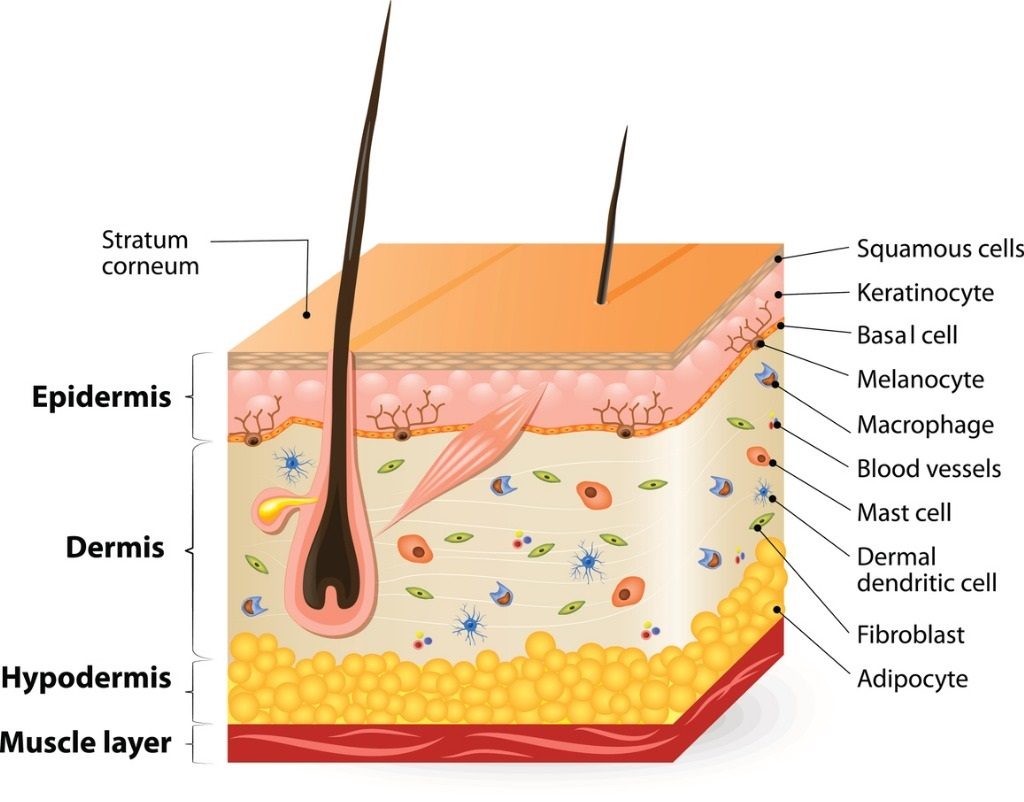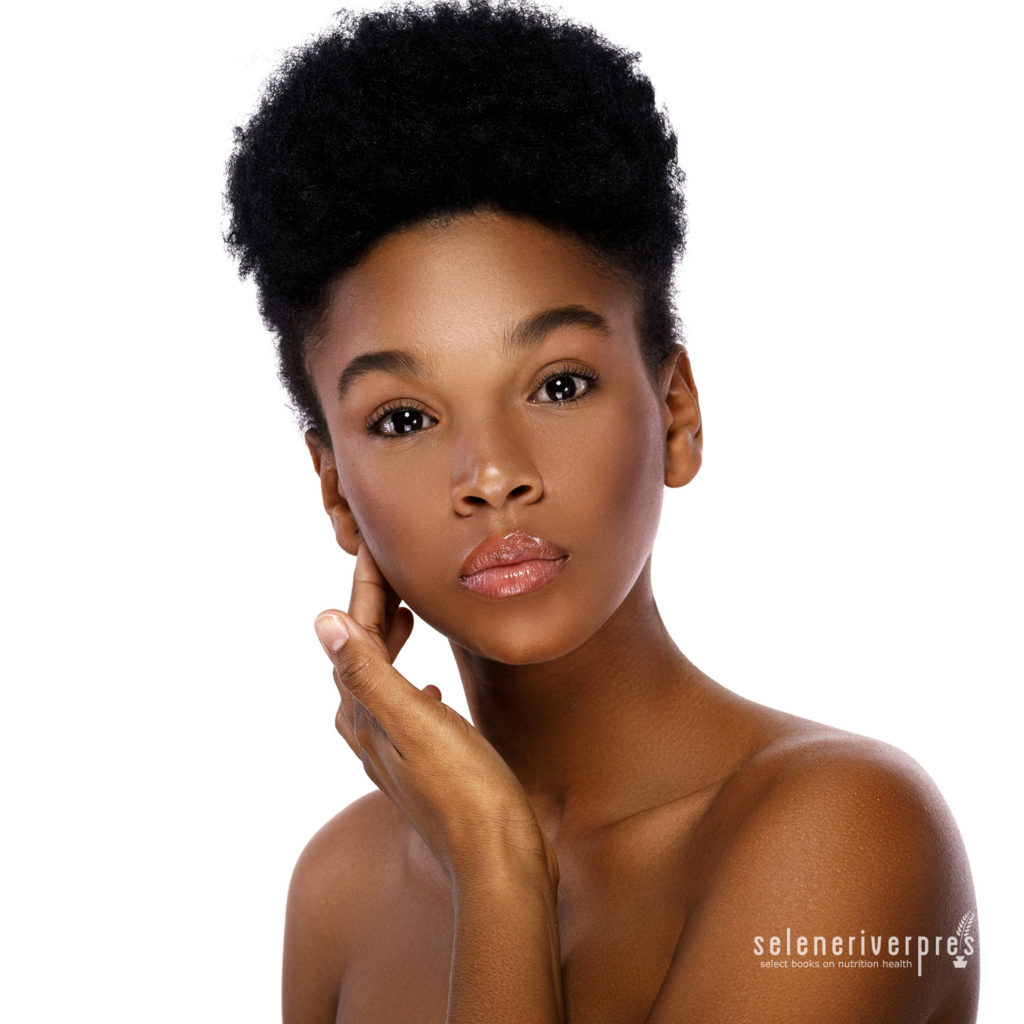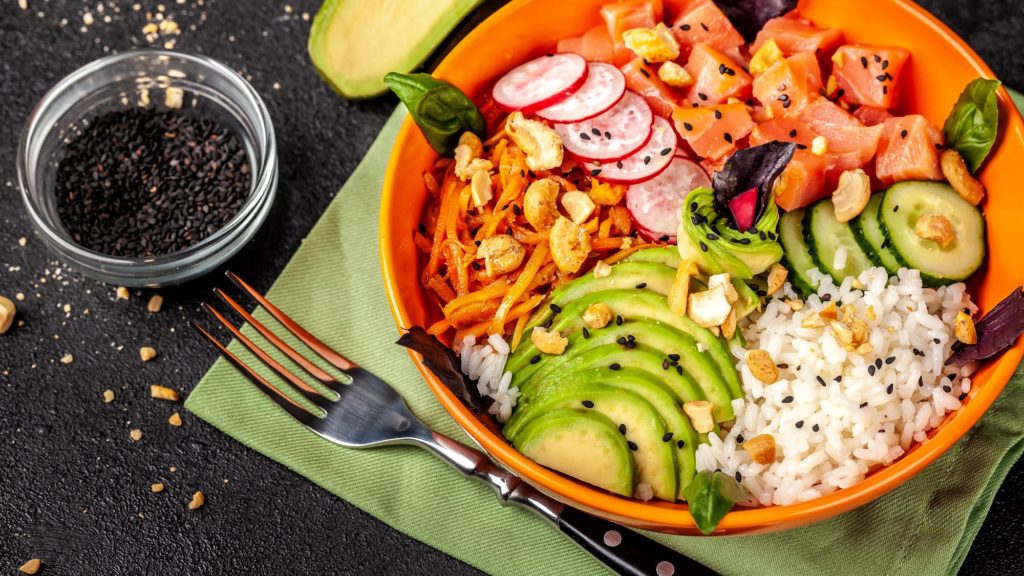During a sit with a sick friend, one of the first things she did was apologize, saying, “How awful I must look. My wrinkles are so obvious without my makeup!” It genuinely took me by surprise. No doubt we all look a little drawn when we’re ill, but it goes to prove that most of us remain conscious of our looks. I believe few of us really know how to look “forever young” to the extent possible as we age. Allow me then to share some things that can help in your quest to recapture—or in some cases, keep—your youthfulness.
Immediately after my friend voiced her angst about her wrinkles, I thought to myself that I’m certainly not in that vanity-seeking category (cough, cough). BUT! As I reassessed my own thoughts, I had to admit that once I hit fifty, I too started putting a good deal of effort into making myself “look” younger. I also hate to admit it, but when we meet someone the same age as us and notice they have more facial wrinkles than we do, we experience something close to smugness and think to ourselves that we look more youthful than they (sigh). Thankfully, our thoughts cannot be heard!
Understanding a Few Simple Facts About Skin and Wrinkles
I liked something I read recently at Newsmax.com about antiaging supplements. It seemed like a great place to start as I detail some of the more important facts about facial skin and wrinkles:
“Cheryl Myers, RN, a noted author and lecturer who believes in bridging the gap between the worlds of mainstream and integrative medicine to offset the ravages of aging…explains that there are certain parts of the world called Blue Zones where people live longer and healthier. These include Okinawa, Japan; Sardinia, Italy; and the island of Icaria in Greece.”
The article of course details how many people who don’t live in one of these pristine places can still mimic the diets and habits of the Blue Zone. The basic recommendations, as you might have guessed, are as follows:
- Neutralize free radicals
- Curb inflammation
- Detoxify the liver
- Take her suggested supplements
This excellent article echoes the recommendations of many holistic practitioners,myself included (as I write about in my many blog posts). And for certain, there are thousands of books that espouse the many ways and means of achieving these sensible suggestions.
That being said, I decided to blog about my own recommendations. As such, I will discuss inflammatory and also anti-inflammatory foods that are a must for the health of your facial skin. Last but not least, I will share a few beauty recipes and whole food supplements that encourage healthy, beautiful skin as we age. Let’s begin by learning a little about the specialness of our facial skin.
Facial Skin: What’s It All About?
While researching the subject of facial skin, wrinkles, and the many intricate features of our precious face, I was astonished at the enormous number of studies and articles on the topic. There’s enough information out there to write at least a 600-page book on the subject. (Smile) Permit me then to outline from the best sources I could find for the purpose of this blog post—without writing a book!
How Stuff Works states that the difference between the skin on your face and the rest of your body is the following (emphasis mine):
“Your skin may cover your entire body, but its thickness varies, padding parts of your body more prone to wear and tear with thick skin and placing thinner skin on the parts of your body that take less of a beating. The skin on your face is thinner than the skin on your body, with the exception of the chest, and deserves a bit more TLC, according to Valerie Goldburt, MD, PhD, and dermatologist at Advanced Dermatology and the Center for Laser and Cosmetic Surgery.”
For starters, this point is essential in understanding that our facial skin should be given much more attention and care than the skin on other parts of the body. To do that, read on for my recommendations below.
The three layers of your facial skin are the epidermis, the dermis, and the subcutaneous. Understanding the role of each of these layers will be a  critical part of your knowledge base. This slide show on the functions of the skin serves as an easy way to avoid long articles so you can quickly hone up on why each layer needs your attention. Easy to follow and very informative, don’t miss this presentation. It’s a winner!
critical part of your knowledge base. This slide show on the functions of the skin serves as an easy way to avoid long articles so you can quickly hone up on why each layer needs your attention. Easy to follow and very informative, don’t miss this presentation. It’s a winner!
Skin microbiome: Of all the research I did, this article from Dermstore gave me goose bumps, as I’m a big fan of making kefir, some of my own cheese, and beet kvass (as well as many other fermented foods from Nourishing Traditions). One main emphasis of the article is to make your own probiotics, which is one of the great secrets to beautiful facial skin:
“Gut microbiome helps break down food, absorb nutrients and eliminate unwanted toxins. When there is an unhealthy gut microbiome, it can cause gastrointestinal issues, which could also lead to dull skin and acne. Research shows that acne-prone and rosacea skin types have seen improvement with continued probiotic usage, which balances the gut.”
Probiotics and prebiotics are also highly recommended for superior healthy skin that maintains elasticity and form. Apparently, Dermstore markets the latest rage, “topical probiotics.” However, since I’ve not ever used their products, and since I make my own cosmetics (which are few) as well my own probiotics, I don’t necessarily recommend the use of commercially made probiotics.
It’s the “gut microbiome” (good bacteria) that makes a huge difference in our skin and overall health. Healthy gut = healthy skin. This blog post discusses the difference between probiotics and prebiotics and also has some excellent recipes.
Inflammatory Foods to Avoid
The following commentary by Bruce Fife, ND, from a recent blog post on inflammatory foods and neutralizing free radicals, has all you want to know about what to eat:
“An inflammatory diet is one that promotes inflammation or contains inflammatory foods. Such foods include sugar (in all its many forms), polyunsaturated vegetable oils, many chemical food additives, GMO foods loaded with pesticide residue, and other heavily sprayed foods.
“Simple carbohydrates promote inflammation because they raise blood glucose, and elevated blood glucose increases the rate that advanced glycation end-products (AGEs), which are very pro-inflammatory foods. Anything that promotes the production of free radicals is pro-inflammatory. AGEs do this. Polyunsaturated fats do this, as do some food additives (MSG, aspartame, etc.), charred or overly cooked foods, pesticides, and radiation (UV, X-ray, and so on).
“Processed foods are likely pro-inflammatory because they usually contain sugar, pesticide residue, vegetable oils, and food additives that promote inflammation. So stay away from packaged, processed foods. Eat fresh, whole foods and avoid restaurants!”
The Most Nutritious Anti-Inflammatory Foods to Nourish Your Skin
Rather than make a long list of anti-inflammatory foods, I invite you to visit this page on my website that explains each of “The Fourteen Super Foods” recommended by Sally Fallon Morrell, author of Nourishing Traditions.
Whole Food Supplements to Nourish Your Skin and Detox Your Liver
Dermatrophin PMG: Supports healthy skin and connective tissue. It also provides a unique profile of minerals, nucleotides, and peptides.
DermaCo: Supports normal flushing of toxins from the body, encourages the healthy function of the organs of elimination, promotes normal healthy skin integrity, cleanses the blood, encourages healthy bowel and kidney function and supports lymphatic system function.
Livaplex: Foundational liver support for healthy liver and gallbladder function, normal toxin-elimination function, healthy digestion of fats, enhances bowel function and healthy bile production.
A Few Beauty Recipes
The first two recipes below are from Janice Cox of Natural Beauty at Home. (Note: I have only listed ingredients and preparation. All personal comments have been left out according to recipe copyright guidelines as I understand them.)
Disclaimer: Always test essential oils or seek professional help before using them to be sure you are not allergic to them.
Basic Cold Cream
⅛ teaspoon borax powder
¼ cup pure water (use distilled if in doubt)
½ cup light oil such as almond, sunflower or light sesame
2 tablespoons grated beeswax
Dissolve the borax in the water and set aside. Mix together the oil and beeswax in a heat-resistant container and gently heat in a water bath until the wax begins to melt, stirring occasionally. When the wax is melted, heat the borax, water mixture to very hot but do not boil. Now you may use a blender, hand mixer, or by hand, but you want to put the hot wax mixture in a bowl or blender and slowly add the water mixture to it, stirring briskly or blending on low. You want to add the water in a slow, steady stream. Once combined, pour the warm cream into a clean container and let the mixture cool completely. You should have a white, rich cream. To use: massage into your skin. You may also use as a cleansing cream. Yield: 8 ounces.
Dandelion Age Spot Oil
¼ cup fresh, chopped dandelion leaves
2 tablespoons castor oil
2 tablespoons sunflower oil
Make sure the dandelion leaves are clean and dry. (Also be sure the leaves you use have not been sprayed with chemicals.) Place the leaves and oils in a heat-resistant container and gently warm. Do not boil. Let the mixture sit for at least 3 hours. Strain out all the leaves and pour into a clean bottle with a tight-fitting cork or lid. To use: Rub a small amount of the oil into your skin daily. It may take several weeks, but you will see your freckles and ages spots begin to fade.
Maria’s Daily Facial Massage Oil
⅓ cup Viobin Wheat Germ Oil
5–7 drops of organic frankincense essential oil
Use any essential oil of your choice, but my favorite for this purpose is organic frankincense. This can be left on your bathroom counter since it is a rich source of natural vitamin E, which serves as a preservative. I use approximately ¼ to ½ teaspoon in the palm of my hand and rub it into my neck and face in a steady but gentle upward motion until my skin feels slightly warm. This is a great blood-circulating facial massage without any extra effort. Just use daily after your shower or bath.
In addition to my Nourishing Traditions diet, which includes lots of fermented foods that contain high-quality probiotics and my high-collagen bone broth (recipe below), this simple-to-make facial massage oil has kept my skin supple and healthy for many years.
Piggy and Chicken Feet Basic Bone Broth: Collagen-Rich for Great Skin
—A Traditional Cook original recipe developed for my blog post on muscle memory.
I can almost hear you saying eeew (smile), but don’t let the ingredients in this robust high-gelatin broth scare you off. I get my piggy and chicken feet locally from Ranch Foods Direct. However, you can also find a supplier in the Weston A. Price Foundation Shopping Guide or Find Real Food phone app.
This particular combination is one the densest gelatinous broths you can make—even thicker than Jell-O!
Ingredients
1 pig foot (mine was approximately 10 inches long)
1 package (about 1 lb.) chicken feet, cleaned with skin left on
1 cup vinegar
1 large yellow onion, chopped
Raw leftover veggies (except beets), if you have them
2 tablespoons apple cider vinegar
Instructions
- Place pig’s foot and chicken feet in a small oval pan. Add ½ cup of vinegar and fill pan with spring water. Carefully place pan in refrigerator and allow feet too soak through the night.
- Next morning, rinse feet well and place in a large oval slow cooker. Add onion and other raw leftover veggies (if using). Add spring water and 2 tablespoons apple cider vinegar as stated in the recipe ingredients above to fill to top. Cover and place on high heat for approximately 1 hour.
- Turn to low and simmer for approximately 12 hours. (I generally start mine at 5–6 a.m. in the morning, and it’s nicely cooked by 6 p.m. in the evening.)
- Allow broth to cool. Remove pig’s foot with a slotted spoon and save to eat. (It’s quite tasty with a bit of salt and pepper.) Remove chicken feet with the slotted spoon. (These can be cooked a second time until extremely soft, then crushed for use in your homemade dog or cat food.)
- Strain broth into a large glass bowl and place in refrigerator overnight.
- Next morning you will have a thick and healthy broth. I freeze mine in one-pint BPA-free plastic containers for later use in my beans instead of water, or add this broth to other soups instead of water. You can also heat a cup, add finely minced garlic and some salt and pepper, and serve it with a meal.
Afterthoughts from the Traditional Cook
Following are three opinions from some of my favorite people. Nothing scientific about them, but they do help us to share in the thoughts of other nature-loving individuals.
- Sally Fallon Morrell, President of the Weston A. Price Foundation: Some plastic surgeons in Los Angeles did a survey on this, back in 1987. They found that the women using polyunsaturated oils had the most wrinkles. (And by inference, if you eat a lot of saturated fat, you won’t get many wrinkles.)
- Member of our Discussing NT chat group: My opinion is that they wear makeup and put a lot of toxic products on their skin. For example, when I wore makeup and put toxic products on my face as a teenager into early adulthood, people would think I looked five to seven years older than I was. My skin was wrinkling. After a couple of years with no makeup and using only natural products on my skin, people take me to be five to eight years younger than I am. And I’ve noticed people who use more sunscreen also look older. When my mother stopped using sunscreen, I thought she was crazy, but she anti-aged.
- Member of our Chapter Leader chat group: A vegan diet lacks collagen; skin needs it. I see vegans as they grow old and they look old very early. Eat broth, or put gelatin powder into whatever you can think of. Gelatin powder is usually made of pig’s skin. Do facial yoga; the face has tons of muscles. Our face is the part that can be moved into countless grimaces. Whenever the skin is dried out, the skin wrinkles. Put or use lard in your creams, or use Green Pastures beauty balm.
Just remember that Mother Nature always wins!
Disclaimer from Maria Atwood, CNHP: I am a Certified Natural Health Professional, CNHP, not a medical doctor. I do not diagnose, prescribe for, treat, or claim to prevent, mitigate, or cure any human diseases. Please see your medical doctor or health practitioner prior to following any recommendations I make in my blog posts or on my website.
Images from iStock/Jun (main), ttsz (cell), sanjagrujic (woman smoking), Zufar Kamilov (rice bowl).





